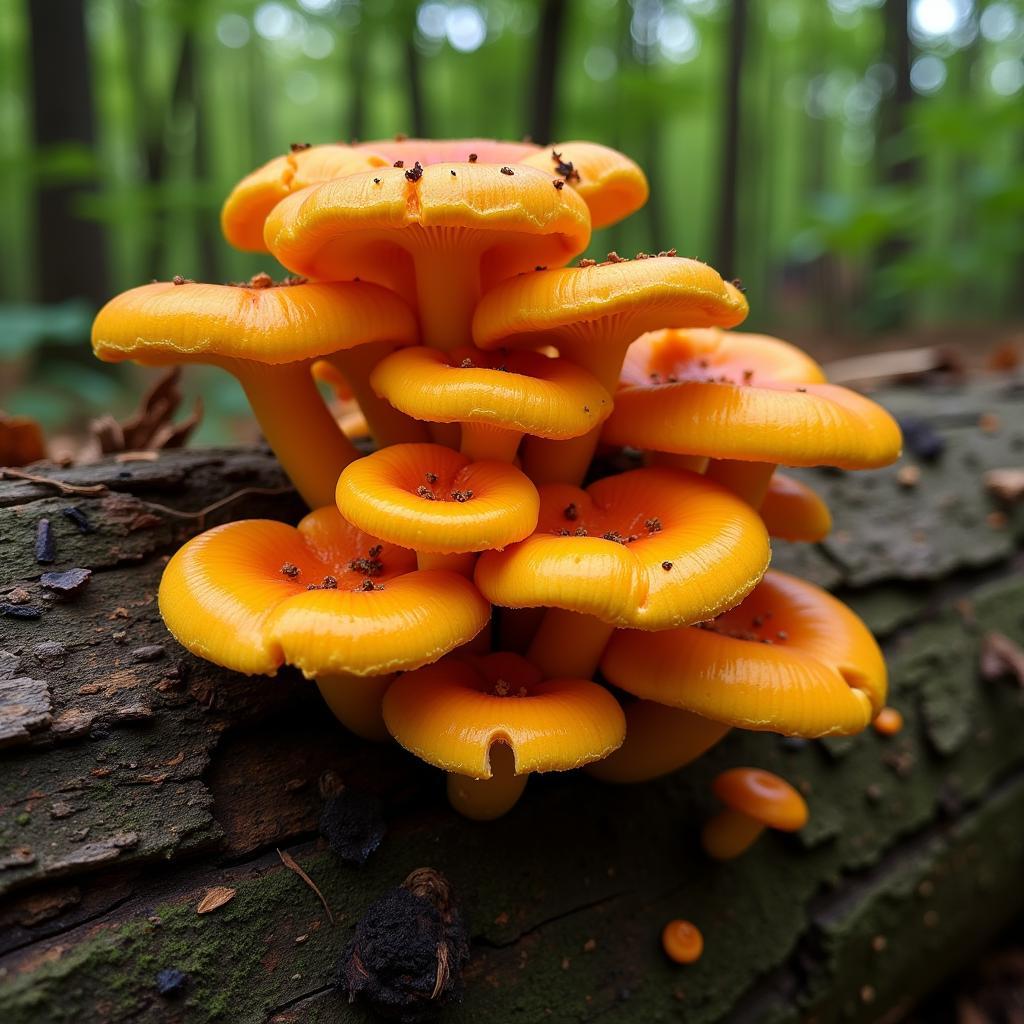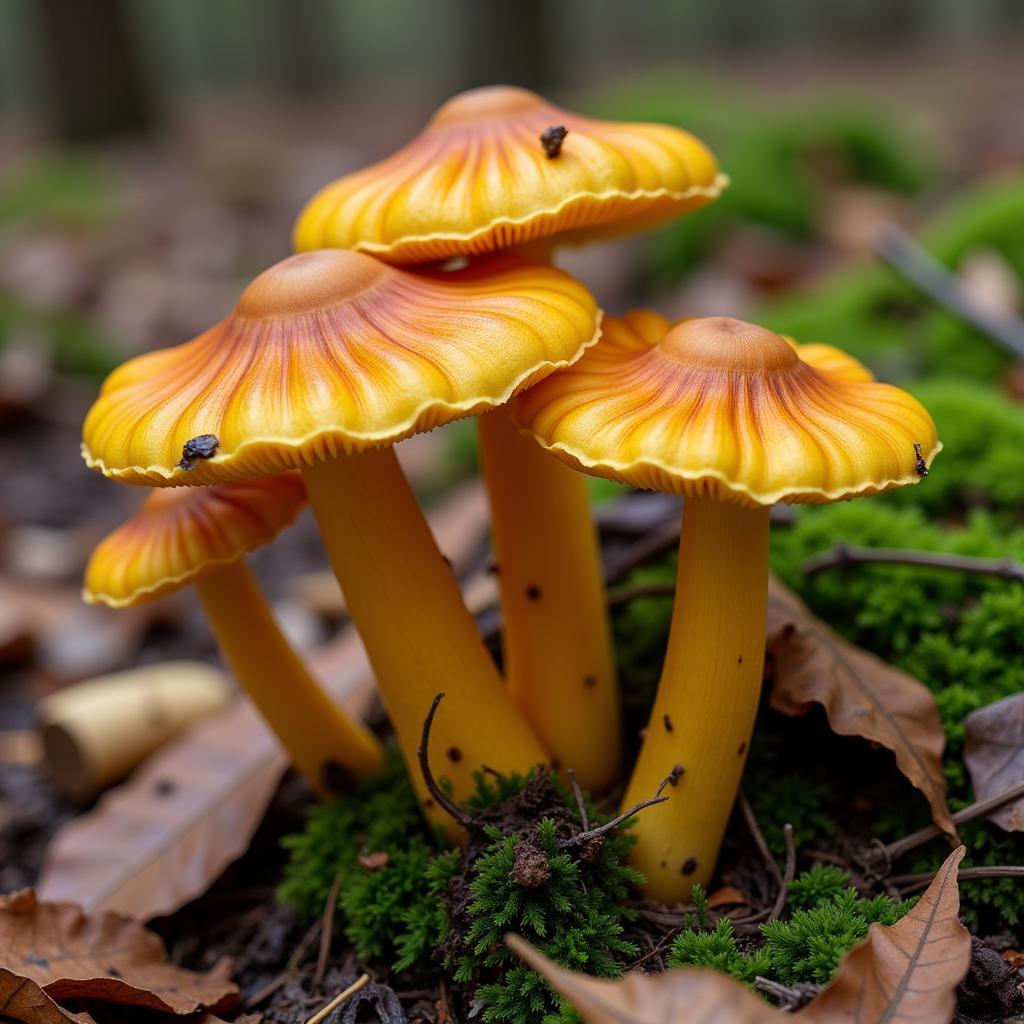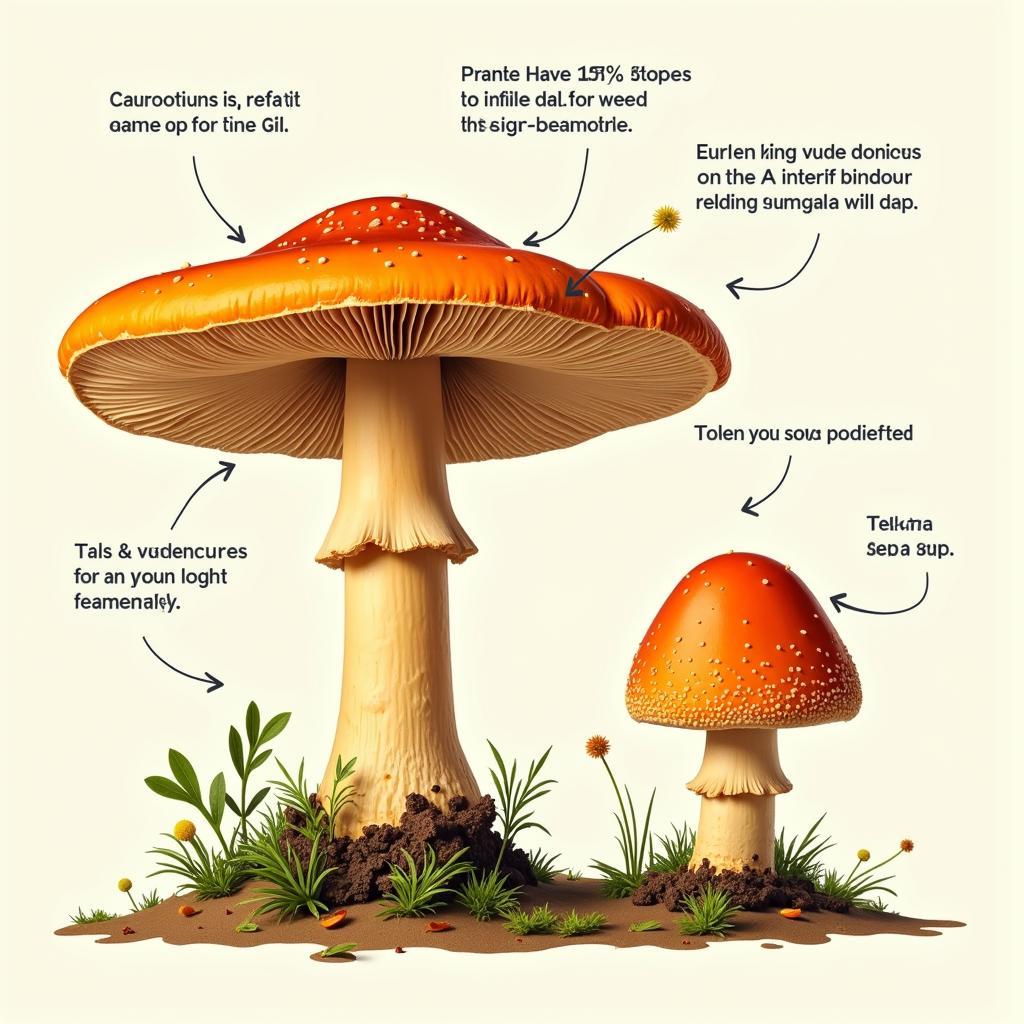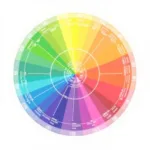Orange mushrooms are a fascinating and diverse group, ranging from edible delicacies to toxic beauties. If you’ve stumbled upon an orange fungus and are wondering “what kind of mushroom is orange in color?”, this guide is for you. We’ll explore some of the most common orange mushrooms, discussing their identifying features, habitats, and edibility.
Decoding the Orange Hue: Common Orange Mushrooms
Identifying mushrooms solely by color can be dangerous, as many species share similar hues. However, understanding which orange mushrooms are common in your area can narrow down the possibilities. Remember, never consume a wild mushroom unless you’re absolutely certain of its identification.
- Jack-O’-Lantern Mushrooms ( Omphalotus illudens): These strikingly vibrant orange mushrooms are often mistaken for chanterelles. However, unlike edible chanterelles, Jack-O’-Lanterns are toxic and cause severe gastrointestinal distress. They typically grow in clusters on wood, and notably, their gills glow in the dark!
 Jack-o'-Lantern Mushrooms Growing on Wood
Jack-o'-Lantern Mushrooms Growing on Wood
- Chanterelles ( Cantharellus cibarius): These prized edible mushrooms boast a beautiful apricot-orange hue and a distinctive funnel shape. Their ridges, rather than true gills, run down the stem. Chanterelles have a fruity aroma and are a culinary delight.
 Golden Chanterelle Mushrooms in Forest
Golden Chanterelle Mushrooms in Forest
-
Chicken of the Woods ( Laetiporus sulphureus): This bright orange and yellow shelf-like fungus grows on trees. When young, it has a soft, chicken-like texture and is considered a choice edible. However, some people experience allergic reactions, so caution is advised.
-
Lobster Mushrooms ( Hypomyces lactifluorum): These aren’t actually mushrooms, but a parasitic fungus that infects other mushrooms, turning them a vibrant orange-red. They have a seafood-like aroma and are considered a delicacy by many.
Are All Orange Mushrooms Poisonous?
No, not all orange mushrooms are poisonous. As discussed above, chanterelles, chicken of the woods, and lobster mushrooms are all edible orange fungi. However, many toxic orange mushrooms exist, highlighting the importance of accurate identification.
How to Identify Orange Mushrooms Safely
Accurate mushroom identification requires careful observation and attention to detail. Consider the following factors:
- Shape and Size: Note the overall shape of the mushroom, including the cap, stem, and gills or pores.
- Gill or Pore Structure: Observe the underside of the cap. Are there gills, pores, teeth, or ridges?
- Habitat: Where is the mushroom growing? On wood, in soil, under specific trees?
- Spore Print: Taking a spore print can be a crucial step in identification. Place the cap on a piece of paper and cover it for a few hours to collect the spores.
- Smell and Texture: Note the mushroom’s aroma and texture.
 Identifying Features of an Orange Mushroom
Identifying Features of an Orange Mushroom
Orange Mushrooms and their Culinary Uses
Edible orange mushrooms like chanterelles and chicken of the woods offer unique flavors and textures to various dishes. Chanterelles are often sautéed with butter and herbs, while chicken of the woods can be grilled, fried, or added to soups and stews. Always cook wild mushrooms thoroughly before consumption.
Conclusion
While many beautiful orange mushrooms exist, accurate identification is critical for safe foraging. Remember, never eat a wild mushroom unless you are 100% certain of its identity. When in doubt, consult with a mycologist or experienced mushroom hunter. Enjoy the fascinating world of fungi, but prioritize safety above all else when encountering an orange mushroom and questioning “what kind of mushroom is orange in color?”
FAQ
- What’s the most common poisonous orange mushroom? Jack-O’-Lantern mushrooms are a common poisonous orange mushroom often mistaken for chanterelles.
- Are there any orange mushrooms that glow in the dark? Yes, Jack-O’-Lantern mushrooms have bioluminescent gills that glow faintly in the dark.
- Can I eat orange mushrooms raw? No, wild mushrooms should always be cooked thoroughly before consumption to eliminate potential toxins.
- Where can I find more information about mushroom identification? Field guides, mycological societies, and online resources can provide valuable information for mushroom identification.
- What should I do if I suspect I’ve eaten a poisonous mushroom? Seek immediate medical attention.
- Are chanterelles and Jack-o’-lanterns easy to confuse? Yes, they can be, so careful attention to gill structure and growth habit is essential.
- Are chicken of the woods mushrooms always safe to eat? While generally considered safe, some people experience allergic reactions, so caution is advised.
Other Related Questions
- Are there any blue mushrooms?
- What are the most poisonous mushrooms?
- What are the benefits of eating mushrooms?
You can find more information on what is ash hair color.
Need Help with Your Color Choices?
For assistance with color selection and design, contact us at:
Phone: 0373298888
Email: [email protected]
Address: 86 Cầu Giấy, Hà Nội.
We have a 24/7 customer service team ready to assist you.
